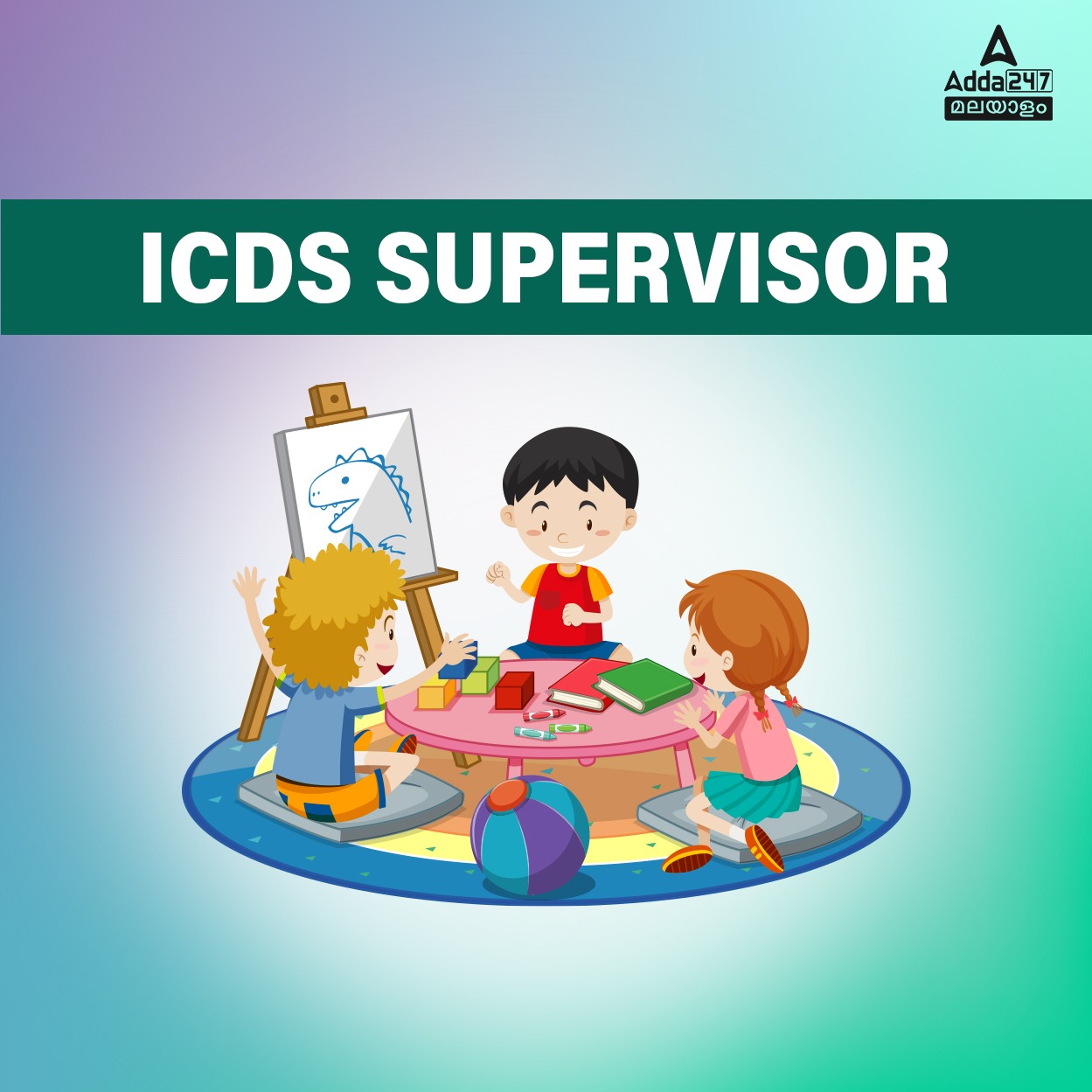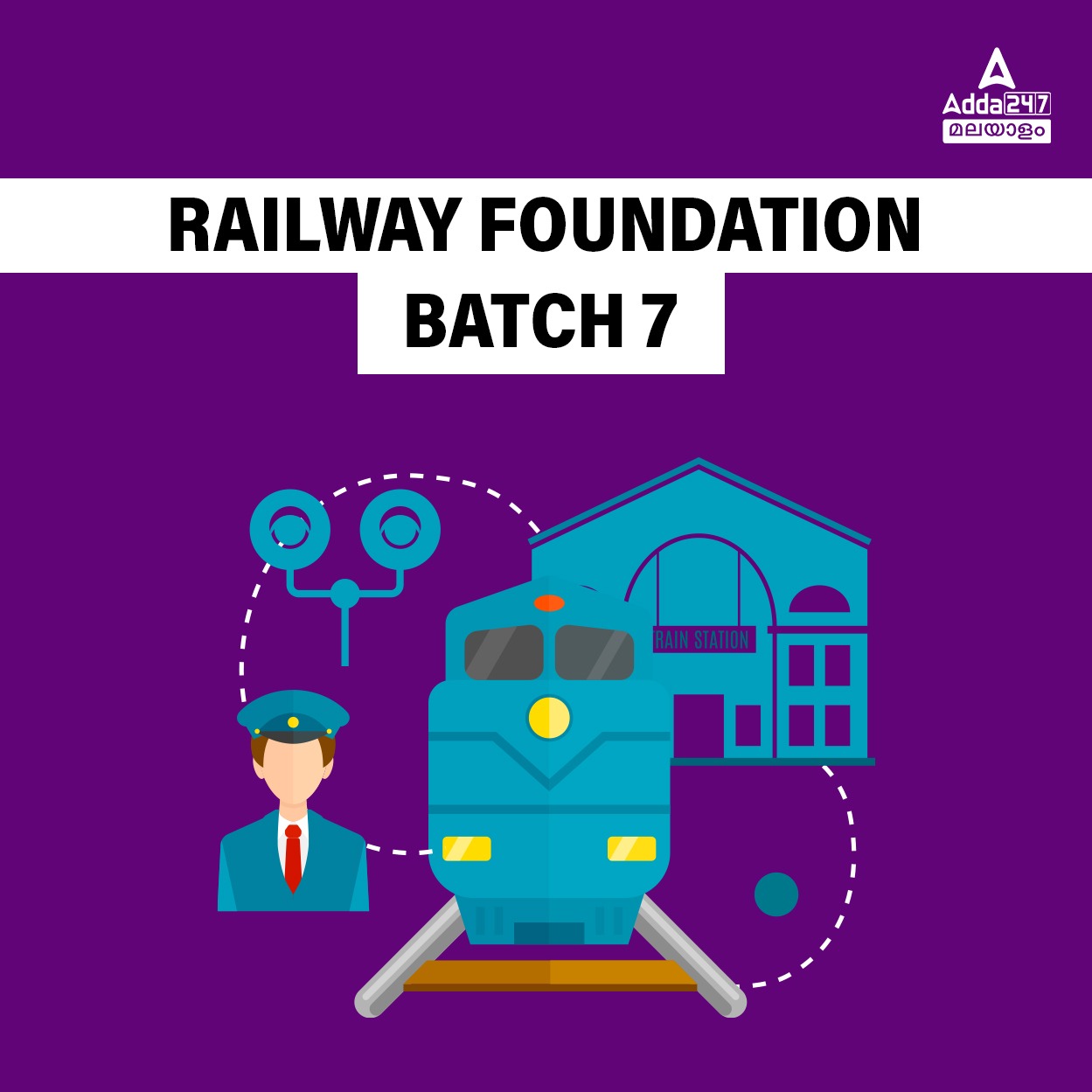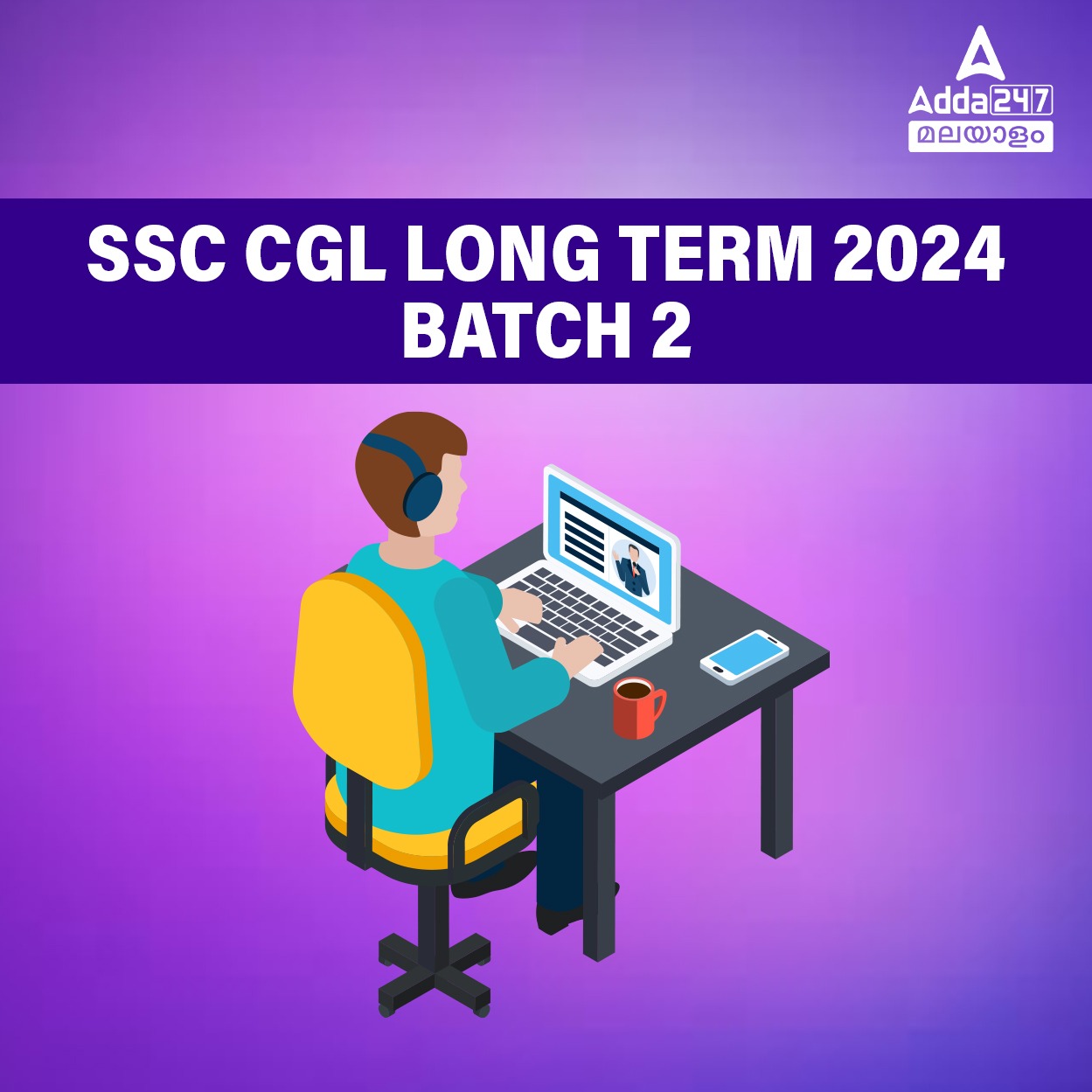Table of Contents
കേരള ബാങ്ക് ക്ലർക്ക് സിലബസ് 2024
കേരള ബാങ്ക് ക്ലർക്ക് സിലബസ് 2024 : കേരള പബ്ലിക് സർവീസ് കമ്മീഷൻ ഔദ്യോഗിക വെബ്സൈറ്റായ @www.keralapsc.gov.in ൽ കേരള ബാങ്ക് ക്ലർക്ക് സിലബസ് പ്രസിദ്ധീകരിച്ചു. പരീക്ഷയ്ക്കുള്ള തയ്യാറെടുപ്പുകൾ ആരംഭിക്കാൻ സമയമായി. പരീക്ഷയിൽ വിജയിക്കുന്നതിന്, സിലബസിനെക്കുറിച്ച് വ്യക്തമായ ധാരണ ഉണ്ടായിരിക്കണം, കേരള ബാങ്ക് ക്ലർക്ക് സിലബസ് 2024 വിശദമായി വായിച്ച് മനസിലാക്കുക. ചുവടെ നൽകിയിരിക്കുന്ന ലിങ്ക് ഉപയോഗിച്ച് നിങ്ങൾക്ക് കേരള ബാങ്ക് ക്ലർക്ക് സിലബസ് 2024 PDF രൂപത്തിൽ ഡൗൺലോഡ് ചെയ്യാവുന്നതാണ്.
കേരള ബാങ്ക് ക്ലർക്ക് സിലബസ് 2024 : അവലോകനം
ചുവടെ നൽകിയിരിക്കുന്ന പട്ടികയിൽ കേരള ബാങ്ക് ക്ലർക്ക് സിലബസ് 2024 സംബന്ധമായ എല്ലാ പ്രധാനപ്പെട്ട വിവരങ്ങളും ലഭിക്കും.
| കേരള ബാങ്ക് ക്ലർക്ക് സിലബസ് 2024 | |
| ഓർഗനൈസേഷൻ | കേരള പബ്ലിക് സർവീസ് കമ്മീഷൻ |
| കാറ്റഗറി | പരീക്ഷ സിലബസ് |
| വകുപ്പ് | കേരള സ്റ്റേറ്റ് കോഓപ്പറേറ്റീവ് ബാങ്ക് ലിമിറ്റഡ് |
| തസ്തികയുടെ പേര് | ക്ലർക്ക് / കാഷ്യർ |
| പരീക്ഷാ മോഡ് | ഓൺലൈൻ/ OMR |
| ചോദ്യങ്ങളുടെ മാധ്യമം | ഇംഗ്ലീഷ് |
| മാർക്ക് | 100 |
| പരീക്ഷ ദൈർഘ്യം | 1 മണിക്കൂർ 30 മിനിറ്റ് |
| മാർക്ക് ഡിസ്ട്രിബൂഷൻ | പോസിറ്റീവ് മാർക്ക് : 1 മാർക്ക്, നെഗറ്റീവ് മാർക്ക്: 0.33 മാർക്ക് |
| ഔദ്യോഗിക വെബ്സൈറ്റ് | www.keralapsc.gov.in |
കേരള ബാങ്ക് ക്ലർക്ക് പരീക്ഷ പാറ്റേൺ 2024
കേരള ബാങ്ക് ക്ലർക്ക് / കാഷ്യർ തസ്തികയുടെ പരീക്ഷ പാറ്റേൺ ചുവടെ ചേർക്കുന്നു.
- ബാങ്ക് ക്ലർക്ക് പരീക്ഷയിൽ ഒബ്ജക്റ്റീവ് ടൈപ്പ്, മൾട്ടിപ്പിൾ ചോയ്സ് ചോദ്യങ്ങൾ മാത്രമേ ഉണ്ടാകൂ.
- പരീക്ഷയിൽ ആകെ 100 ചോദ്യങ്ങൾ അടങ്ങിയിരിക്കുന്നു.
- പരീക്ഷാ ദൈർഘ്യം 1 മണിക്കൂർ 30 മിനിറ്റ്
- ഓരോ തെറ്റായ ഉത്തരത്തിനും 0.33 മാർക്ക് നെഗറ്റീവ് മാർക്കിംഗ് ഉണ്ട്.
കേരള ബാങ്ക് ക്ലർക്ക് / കാഷ്യർ പരീക്ഷ പാറ്റേൺ 2024
കേരള ബാങ്ക് ക്ലർക്ക് സിലബസ് 2024
കേരള ബാങ്ക് ക്ലർക്ക് / കാഷ്യർ തസ്തികയുടെ വിശദമായ സിലബസ് ചുവടെ ചേർക്കുന്നു.
PART – I – Co – Operation – 50 Marks
1. Cooperation and other economic systems- Capitalism, socialism and communism cooperatives and other forms of business organizations- distinctive features of cooperative organization vis-à-vis-, partnership and joint stack companies- a cooperative as an institution and as an enterprise- cooperative common wealth. (5 marks)
2. Evolution and development of cooperative principles- principles of cooperationRochdale pioneers (I stage)- reformulated principles by ICA (II stage)- Karve Committee on Cooperative Principles(III stage)- Principles of ICA in 1995( IV stage)- distinction between Cooperative values and cooperative principles. (5 marks)
3. Types of Cooperatives in India and in Kerala
(i) Short term and medium term cooperative credit structure- primary agricultural credit societies- urban cooperative Banks and state cooperative Banks, (ii) Long term credit structure-PCARDBs and SCRABDs (iii) General Purpose and special purpose agricultural marketing societies- primary marketing societies and their federations including NAFED, rubber marketing societies and their federations, dairy cooperative societies and their federations, fishery cooperatives and their federations (iv) processing cooperatives-need and importance (v) Housing cooperatives and their federations(vi) Consumer cooperatives and their federations (vii) Industrial cooperatives and their federations- handlooms and power looms, coir, handicrafts (viii) Workers cooperatives –significance of workers cooperatives in Kerala. (7 marks)
4. Management and working of major cooperative organizations and institutions in aid of cooperatives – NAFED, IFFCO, KRIBCO, NABARD, NDDB, NCDC, and National Housing Bank and other national organizations providing assistance to housing
cooperatives. (5 marks)
5. Cooperative audit- Definition-objectives-scope-advantage-difference between audit of cooperative societies and joint stock companies- special features of cooperative audit administrative set up for cooperative audit-types of audit-mechanical audit-preparations for audit and framing of audit programme – staged of practical audit- mechanical audit, administrative audit, preparation of final statement- reconciliation of bank accounts- cooperative auditor- duties, powers and liabilities- audit report- audit certificate- audit classification- assessment and levy of audit fees. (6 marks)
6. Issues in cooperative management- Managing the social process in a cooperative, competition, conflict and cooperation. Associative character of a cooperative and managing a cooperative association. Issues in organizing a cooperative – size of the organization- small area vs large area, single purpose vs multipurpose cooperatives multipurpose vs multifunctional cooperatives- unitary vs federal cooperatives- designer vs greenhouse cooperatives- issues in financing a cooperative- evaluating a cooperative organization- member dimension, enterprise dimension and ethical dimension. (6 marks)
7. Settlement of disputes- arbitration and awards- provisions and procedures- execution and enforcement of awards- provisions and procedures, appeals, review and revisionmeaning and distinction- authority of appeals- cooperative tribunal- constitution and powers- offences and penalties- provisions and procedures. (5 marks)
8. Sources of funds- State aid to cooperatives-share capital contribution- principal state partnership fund- subsidiary state partnership fund- grants- subsidies- owned fundsborrowed funds. (5 marks)
9. Cooperative Legislation in India and in Kerala- Evolution of cooperative legislation in India- the 1904 Act, the Act of 1912, transfer of cooperation as provincial subject, National development Council Resolution 1956, the Model Cooperative Societies Bill 1957, the Model Cooperative Societies Bill 1991 by Planning Commission- Trend towards parallel Cooperative Laws- Andhra Pradesh Mutually Aided Cooperative Societies Act 1995, Multi State Cooperative Societies Act 1984 and its replacement in 2002.Evolutions of Cooperative legislation in Kerala and enactment of Kerala Cooperative Societies Act 1969. (6 marks)
PART II – Banking – 40 Marks
1. Commercial Banking: Origin of the word ‘Bank’. Commercial banking system: Unit banking, branch banking, correspondent banking, group banking/ holding company banking, chain banking, mixed banking. Functions of a commercial bank: Primary functions – Accepting of deposits – different types of deposits – savings deposits, current deposits, fixed deposits, recurring deposits, Basic Savings Bank Deposit Account (BSBDA), Current Account Savings Account (CASA), certificate of deposits; Lending of funds – different methods – direct loans, cash credit, overdraft, discounting of bills; Ancillary Services / Subsidiary Functions: Agency services, general utility services. Principles of commercial banking/ Principles of lending. Credit creation by commercial banks: primary deposits and derived deposits, technique of credit creation, credit contraction, limitations of credit creation. (4 marks)
2. Central Banking: Definition of a central bank, origin of Reserve Bank of India, nationalisation of RBI, functions of RBI – issue of currency, principles and systems of note – issue, RBI as currency authority; RBI as banker, agent, advisor and debt manager to Government, RBI’s financial assistance to Central and State Governments – ways and means advances, overdraft; central bank as bankers’ bank -regulation and supervision of banks by RBI; Reserve Bank as custodian of foreign exchange reserves of the country; developmental role of RBI; Instruments of Monetary Policy : Quantitative techniques of credit control – Bank Rate Policy, operation and limitations of Bank Rate Policy, Open Market Operations (OMO) – objectives, method of operation by RBI, limitations of OMO, Variable Reserve Requirement – Cash Reserve Ratio (CRR) and Statutory Liquidity Ratio (SLR); Qualitative methods of credit control- regulation of consumer credit, variation of margin requirements, moral suasion, rationing of credit. (4 marks)
3. Indian Commercial Banking- Pre- Liberalisation period: Formation of Imperial Bank of India, Origin of State Bank of India and its associates, merging of associate banks with SBI. Social Control over banks – circumstances leading to social control, aims and objectives of National Credit Council. Nationalisation of commercial banks. Lead Bank Scheme: Objectives, functions of Lead Bank, District Credit Plan. Concept of Service Area Approach. Differential Rate of Interest Scheme – features of the scheme. Regional Rural Banks – objectives, capital structure and management, problems and progress of RRBs, merging of RRBs. (4 marks)
4. Indian Commercial Banking – Post Liberalisation: Post liberalisation banking in India – major recommendations of the Narasimham Committee on Financial System, Narasimham Committee on Banking Sector Reforms. Entry of new generation banks. Mergers and acquisitions in banking sector. Local Area Banks: Features. Differentiated banks: Payment Banks and Small Finance Banks – permitted business. Financial Inclusion: Concept, RBI and NABARD initiatives for financial inclusion. (4 marks)
5. Banking Legislation in India: Banking Regulation Act, 1949 with latest amendments – objectives, definition of banking, banking company, approved securities, Demand and Time Liabilities (DTL), permitted and prohibited business of a banking company, regulation of voting rights of shareholders, restriction as to payment of dividend, reserve fund, licensing of banking companies, power of inspection, audit of bank accounts, acquisition of banking companies, amalgamation of banking companies, winding up of a banking company. (4 marks)
6. Practices of Banking: Banker and Customer – general and special relationship between a banker and customer, obligations of banker – honouring of cheques, maintaining secrecy of customers’ accounts, garnishee order, consequences of wrongful dishonor of cheques, stop payment of cheques; rights of a banker- right of general lien, right of set off, banker’s right of appropriation (Clayton’s rule). Banking Ombudsman – objectives, nature of complaints dealt by Ombudsman. Types of customers – operation and closing of different types of bank accounts, special types of bank customers, Accounts of Non Resident Indians; Joint accounts, accounts of partnership firms, joint stock companies, clubs and associations. (4 marks)
7. Law relating to Negotiable Instruments: Characteristics of negotiability, types and features of negotiable instruments – bill of exchange, promissory notes and cheques. Bank drafts, pay orders. Endorsement of negotiable instruments – legal significance, kinds of endorsements. Crossing of cheques – significance of crossing, types of crossing, marking of cheques. Collecting banker – legal status, statutory protection, duties. Paying Banker – dishonour of cheques, statutory protection, payment in due course, holder and holder in due course. Modes of charging securities – lien, pledge, hypothecation, mortgage – kinds of mortgage; Guarantee and indemnity – rights and duties of guarantor.
(4 marks)
8. Agriculture and Micro Finance by banks: Types of agricultural credit – short term, medium term, long term, crop loans; Kisan Credit Card (KCC) Scheme – Objectives/purpose, eligibility, features. Lending to priority sectors – categories, targets and sub targets. National Bank for Agriculture and Rural Development (NABARD) – financial, developmental and supervisory role. Micro finance – concept and significance, Linking of Self Help Groups (SHG) and banks. (4 marks)
9. Technological Advances in Banking : Payment and Settlement System of RBI – Concepts of electronic banking, Electronic Clearing Services (ECS), Real Time Gross Settlement (RTGS), National Electronic Funds Transfer (NEFT), Immediate Payment Service (IMPS), Indian Financial System Code (IFSC), Automated Teller Machine (ATM) card, debit card, credit card, RuPay card, internet banking, mobile banking, digital banking, digital signature, digital certificate, digital wallet, Cash Deposit Machine (CDM), Cheque Truncation System (CTS), cashless payment system, cashless economy; International Payment System – Society for Worldwide Interbank Financial Telecommunication (SWIFT). (4 marks)
10. Recent Trends in Indian Banking: Credit Rating of banks: CAMELS Rating. Capital Adequacy Ratio – Tier I & Tier II capital, Risk Weighted Assets, Capital to Risk Weighted Assets Ratio (CRAR). Non-Performing Assets (NPA) of banks – Classification of Standard, Substandard, doubtful and loss assets, provisioning for NPAs. Concepts of Securitisation, Reconstruction and Security Interest Enforcement under SARFAESI Act, 2002. Pradhan Mantri Social Security Schemes implemented through banks – Rules for Pradhan Mantri Suraksha Bima Yojana (PMSBY), Pradhan Mantri Jeevan Jyoti Bima Yojana (PMJJBY)’ Atal Pension Yojana (APY).( 4 marks)
PART III – IT & CYBER LAWS – 10 Marks
Hardware
Input Devices (Names and uses)
Output Devices (Names and uses/features
Memory devices – Primary and Secondary (Examples, Features)
Software
Classification – System software and Application software
Operating System – Functions and examples
Popular Application software packages – Word processors, Spreadsheets, Database packages, Presentation, Image editors (Uses, features and fundamental concepts of each)
Basics of programming – Types of instructions (Input, Output, Store, Control transfer) (Languages need not be considered)
Computer Networks
* Types of networks – LAN, WAN, MAN (Features and application area)
* Network Devices – Media, Switch, Hub, Router, Bridge, Gateway (Uses of each)
Internet
o Services – WWW, E-mail, Search engines (Examples and purposes)
o Social Media (Examples and features)
o Web Designing – Browser, HTML (Basics only)
Cyber Crimes and Cyber Laws
o Types of crimes (Awareness level)
o IT Act and Other laws (Awareness level)
കേരള ബാങ്ക് ക്ലർക്ക് സിലബസ് 2024 PDF ഡൗൺലോഡ്
കേരള ബാങ്ക് ക്ലർക്ക് സിലബസ് 2024 PDF ഡൗൺലോഡ് ചെയ്യാൻ, ചുവടെ നൽകിയിരിക്കുന്ന ലിങ്കിൽ ക്ലിക്ക് ചെയ്യുക.
കേരള ബാങ്ക് ക്ലർക്ക് സിലബസ് 2024 PDF
Read More:
| Important Articles | |
| കേരള ബാങ്ക് ക്ലർക്ക് വിജ്ഞാപനം 2024 | കേരള ബാങ്ക് ക്ലർക്ക് പരീക്ഷ പാറ്റേൺ 2024 |
| കേരള ബാങ്ക് ക്ലർക്ക് 2024 ടെസ്റ്റ് പാക്ക് | |











